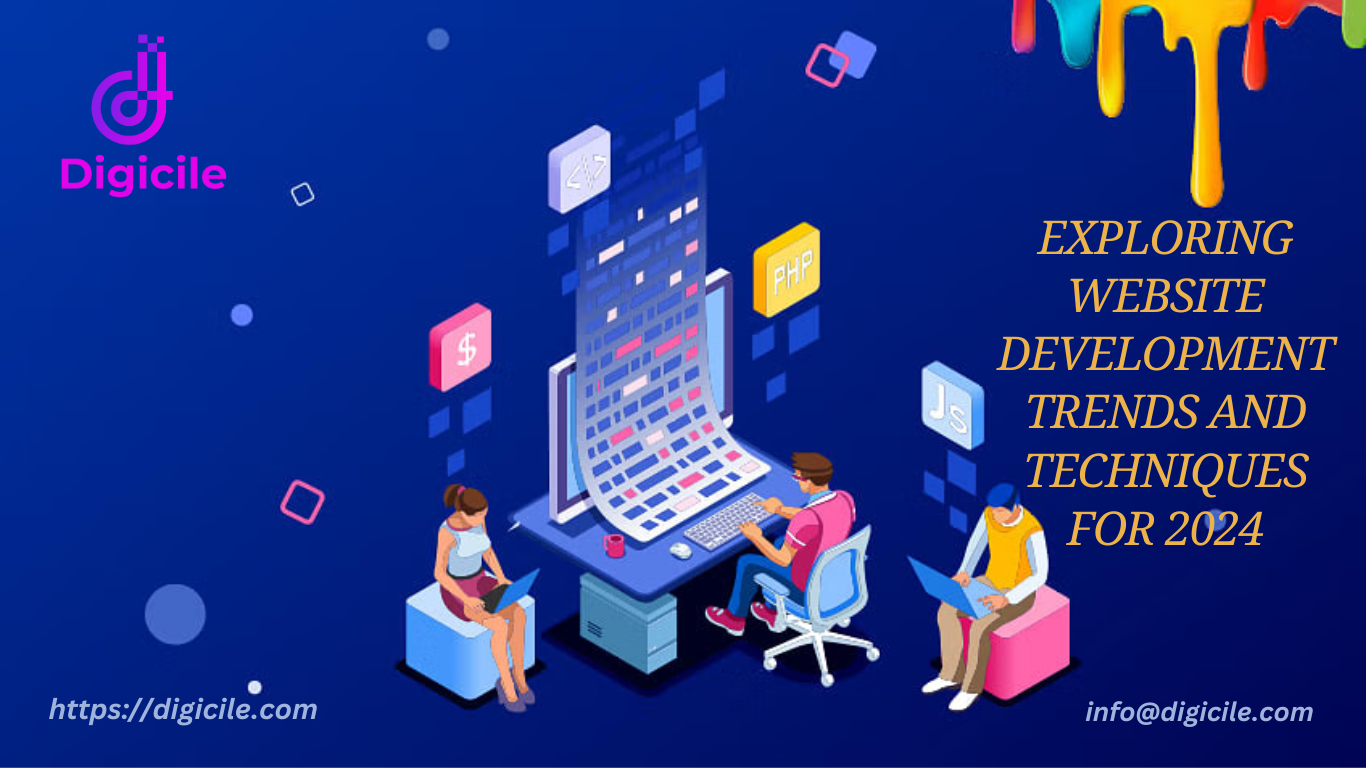Website development continues to evolve at a rapid pace, driven by new technologies, changing user expectations, and emerging best practices. For developers and businesses alike, staying updated with the latest trends and techniques is crucial to creating innovative, user-friendly websites. In this website development blog, we will explore the key trends and techniques shaping the landscape of website development in 2024.
Emerging Trends in Website Development
AI and Machine Learning Integration
Artificial Intelligence (AI) and Machine Learning (ML) are making significant strides in website development. These technologies are being used to enhance user experiences, personalize content, and improve website performance.
- Personalization: AI algorithms analyze user behavior to deliver personalized content and recommendations.
- Chatbots: ML-powered chatbots provide instant customer support and improve user engagement.
- Content Generation: AI tools can assist in generating content, optimizing images, and even writing code.
Voice Search Optimization
With the rise of voice-activated devices like smart speakers and virtual assistants, optimizing websites for voice search is becoming increasingly important.
- Conversational SEO: Focus on natural language processing and long-tail keywords to align with voice search queries.
- Voice-Friendly Content: Create content that answers questions directly and succinctly, enhancing the chances of appearing in voice search results.
Mobile-First Design
The mobile-first approach remains a dominant trend as more users access websites via smartphones and tablets. Designing for mobile first ensures that your website performs well on smaller screens before adapting to larger devices.
- Responsive Design: Implement responsive design techniques to ensure a seamless experience across all devices.
- Performance Optimization: Prioritize fast loading times and efficient mobile navigation.
Progressive Web Apps (PWAs)
Progressive Web Apps combine the best of web and mobile applications, providing users with a native app-like experience directly in their browsers.
- Offline Functionality: PWAs offer offline capabilities through service workers, ensuring access to content even without an internet connection.
- Push Notifications: Engage users with timely and relevant push notifications.
Serverless Architecture
Serverless architecture is gaining traction for its ability to simplify development and reduce operational costs. By using serverless functions, developers can focus on writing code without managing server infrastructure.
- Scalability: Automatically scales resources based on demand, improving performance and reducing costs.
- Cost-Efficiency: Pay only for the compute time consumed, minimizing operational expenses.
Cutting-Edge Techniques in Website Development
Jamstack Architecture
Jamstack (JavaScript, APIs, and Markup) is a modern web development architecture that focuses on decoupling the front end from the back end. This approach enhances performance, security, and scalability.
- Static Site Generators: Tools like Gatsby and Next.js enable the creation of fast, static websites with dynamic functionality through APIs.
- Headless CMS: Use headless Content Management Systems (CMS) like Strapi or Contentful to manage content separately from the front-end presentation.
Advanced CSS Techniques
CSS continues to evolve, offering new techniques for creating visually appealing and responsive designs.
- CSS Grid and Flexbox: Mastering CSS Grid and Flexbox allows for complex, flexible layouts and responsive design without relying on frameworks.
- CSS Variables: Utilize CSS variables for reusable styles and easier theme management.
WebAssembly (Wasm)
WebAssembly enables high-performance execution of code on the web, opening up new possibilities for complex applications and computationally intensive tasks.
- Performance: Use WebAssembly for tasks that require near-native speed, such as gaming or data processing.
- Language Support: Write code in multiple languages and compile it to WebAssembly for use in the browser.
GraphQL
GraphQL is an alternative to REST APIs that allows clients to request exactly the data they need, reducing over-fetching and improving efficiency.
- Flexible Queries: Clients can specify the structure of the response, resulting in more efficient data retrieval.
- Strong Typing: GraphQL’s type system enhances data validation and API documentation.
Micro Frontends
Micro frontends extend the microservices architecture concept to the front end, allowing teams to work on different parts of a web application independently.
- Modularity: Break down large applications into smaller, more manageable pieces, each developed and deployed separately.
- Scalability: Enhance scalability by allowing different teams to work on distinct parts of the application.
Best Practices for Modern Website Development
Focus on Performance
Optimizing website performance is essential for providing a great user experience and improving SEO.
- Lazy Loading: Implement lazy loading for images and other resources to speed up initial page load times.
- Code Splitting: Use code splitting to load only the necessary code for each page, reducing the amount of JavaScript processed.
Embrace Accessibility
Ensuring your website is accessible to all users, including those with disabilities, is a fundamental best practice.
- ARIA Roles: Use Accessible Rich Internet Applications (ARIA) roles and attributes to enhance accessibility.
- Semantic HTML: Leverage semantic HTML elements to improve screen reader support and navigation.
Prioritize Security
Security should be a top priority in website development to protect user data and maintain trust.
- HTTPS: Ensure all data transmitted between the user and your website is encrypted using HTTPS.
- Regular Updates: Keep all software, libraries, and dependencies up to date to protect against vulnerabilities.






